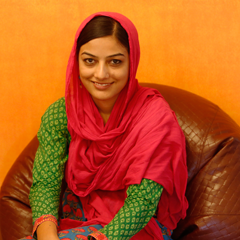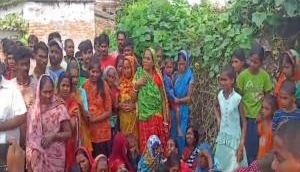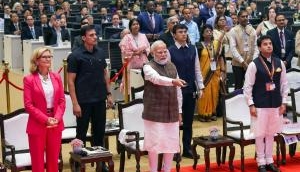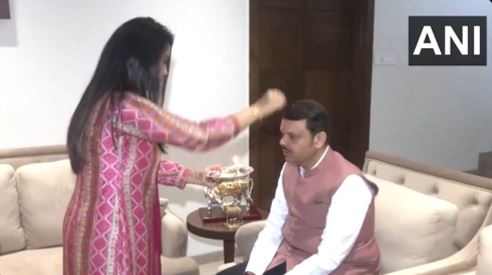
Indo-Pak hostilities are centered around a key issue, and that is Kashmir. This region is of course smack in the middle of all the talks that take place between the two neighbours at all strategic fora. However, to move beyond this tussle, there are a number of areas where the two countries can compete and learn from each other.
Economy
Echoing his concern on similar lines, former Pakistani ambassador to the United States Husain Haqqani said that he did not agree with Pakistan's attitude towards India where the former thinks that the latter is a permanent enemy.
Commenting on Pakistan's attitude towards the G4 summit which was hosted by Indian Prime Minister Narendra Modi in New York, Haqqani said, "So when you have that attitude entrenched in Islamabad and more so in Rawalpindi, then obviously there will be anxiety every time that India moves forward in getting international stature and this is definitely one of those moments."
In 1990, both Pakistan and India had identical per capita incomes, at $390 each. Till 2006 in nominal basis and till 2008 in ppp basis, the per capita income of Pakistan was more than India. But in 2014, the GDP per capita of India surpassed Pakistan in terms of GDP.
Also the foreign direct investment in India, which is now globally seen as one of the fastest growing economy has jumped 48 per cent after the launch of the 'Make in India' programme last year. Prime Minister Narendra Modi on his foreign visits is exploring forums where he can pitch India's potential to accommodate global manufacturing giants and this is a key driver for boosting FDI in the country. Where as such an initiative is lacking from the side of political leaders in Pakistan.
Further Pakistan has comparatively country has comparatively failed to expand a viable export base.
Education
Speaking of the educational status, Haqqani said, "Personally, I would like Pakistan to focus more on putting those children in Pakistan who are out of school, into schools. Pakistan has one of the largest out of school populations in the world. Our literacy rate in 1947 was 16 per cent and India's was 18 per cent... It was a two per cent difference. It has now become a 22 per cent difference."
Literacy rate
According to the National Sample Survey Organisation, India's literacy rate stood at 74.04 per cent in 2015.
Among the age group of seven and above, the male literacy rate was registered at 83 per cent vis-a-vis the female literacy rate of 67 per cent. According to the Pakistan Economic Survey 2014-15, the literacy rate in the country has gone down by two per cent in 2013-14 as compared to the previous year when it was 60 per cent. The country's overall female literacy rate also came down by one per cent, from 48 per cent in 2012-13 to 47 per cent in 2013-14.
Pakistan's government is spending slightly over two per cent in education from its budget where as India is spending 3.8 per cent of its budget on the same. However, India's expenditure is still low, compared to global standards.
Women's empowerment
The lives of Pakistani women has changed during the last 3 decades and they are more empowered and emancipated today than they were ever before. However, both India and Pakistan struggle with the global standard of women's empowerment. A research conducted by the international consulting and management firm Booz & Company in 2012, ranked India 115 on the level of economical empowerment of women in 128 countries. Pakistan was listed at the bottom of the survey.
In both countries, women are still fighting for equality in society, specially a safe and cordial work environment. Both countries have acts in place to protect women against sexual harassment at the workplace. While Pakistan passed the act (The Protection against harassment of women at workplace 2010) earlier, India, with its Sexual Harassment of Women at Workplace (Prevention, Prohibition and Redressal) Act, gave it a nod in 2013.
Freedom of speech
Pakistan has witnessed dark times where freedom of speech is concerned, under the military regimes. India too was a witness grave regulations during the Emergency.
Though India is considered more liberal in comparison to Pakistan but it cannot be denied that even today there are instances where people are charged with sedition and put behind bars for speaking against the government. The tolerance seems to cracking in cases where rationalists like Narendra Dabholkar, Govind Pansare and MM Kalburgi have been put to death for speaking their mind.
Both countries delude their peoples that they enjoy unbridled freedom of speech, but in reality only the views of those in consonance with their rulers prevail.
Expenditure on defense, a cut in overall spending
As a ratio of the projected GDP for FY 2015-16, India's defence expenditure is pegged at 1.74 per cent vis-a-vis 1.76 per cent in 2014-15. Whereas Pakistan has boosted its military budget - with an increase from Rs700bn for the outgoing fiscal year to Rs 780bn for 2015-16. The decision, the Pak government said was taken after considering the security situation and requirements of the armed forces.
It is evident that both countries have been diverting a considerable amount of their budget every year into the defense sector out of the growing insecurities between them. The tension at the LoC reciprocates into the pressure which is laid on monetary allocations in flexing defense muscles, an amount spent which could be utilised for developing other crucial social sectors.
Religious tolerance
Pakistan faces global criticism for its treatment of non-Muslims in the country. But a similar sort of intolerance has been raising its head in India in the last few years. Communal violence against Muslims is not new but in the last one year, there have been innumerable incidents where Muslim have been subjected to discrimination and violence on religious grounds. This also includes provocative statements made by radical groups.
Adding to the miserable picture are incidents of church-bombings which is a blot on the face of India's secular outlook.
First published: 28 September 2015, 18:02 IST






![BJP's Kapil Mishra recreates Shankar Mahadevan’s ‘Breathless’ song to highlight Delhi pollution [WATCH] BJP's Kapil Mishra recreates Shankar Mahadevan’s ‘Breathless’ song to highlight Delhi pollution [WATCH]](https://images.catchnews.com/upload/2022/11/03/kapil-mishra_240884_300x172.png)

![Anupam Kher shares pictures of his toned body on 67th birthday [MUST SEE] Anupam Kher shares pictures of his toned body on 67th birthday [MUST SEE]](https://images.catchnews.com/upload/2022/03/07/Anupam_kher_231145_300x172.jpg)






